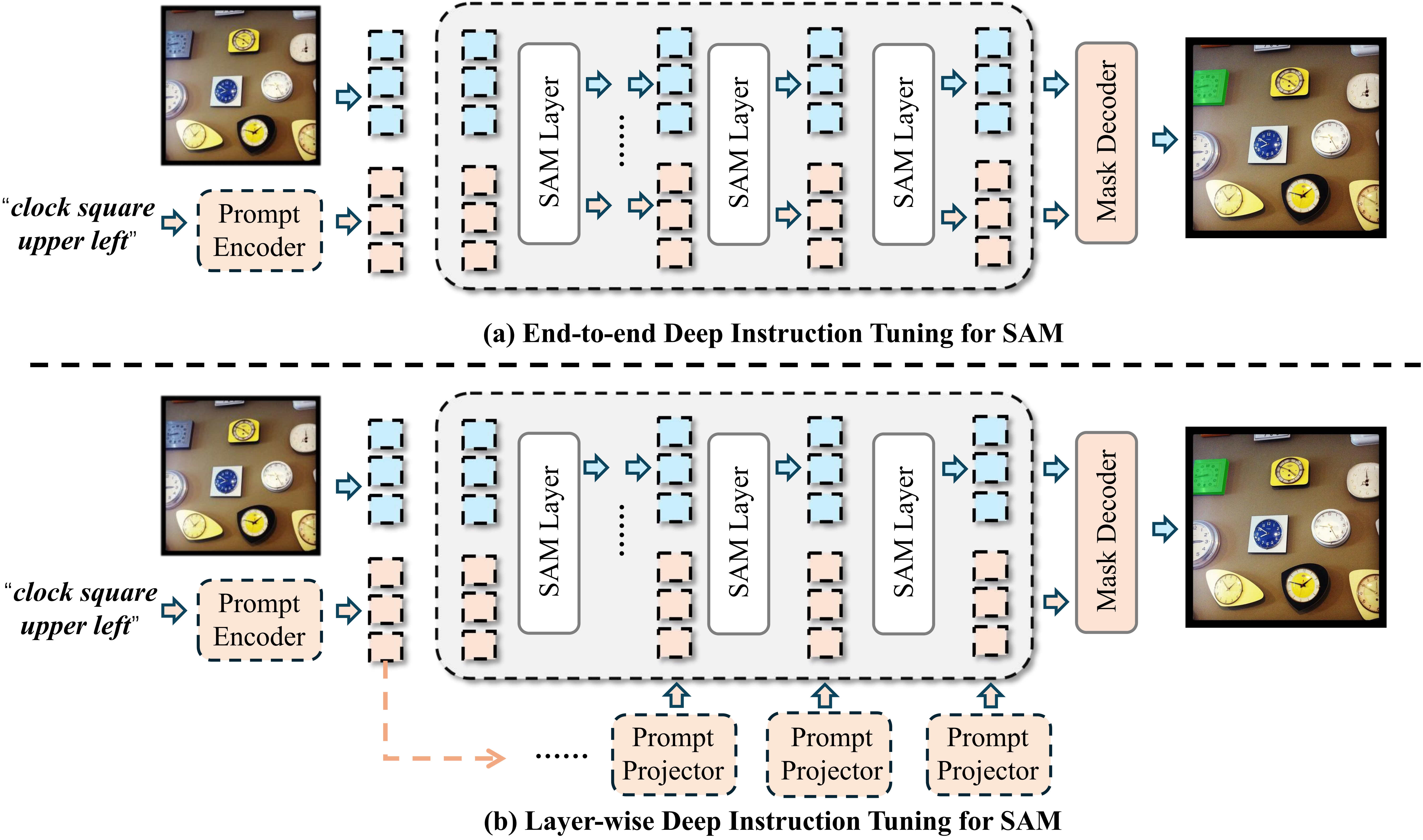


This is the official implementation of "Deep Instruction Tuning for Segment Anything Model", which propose two simple yet effective deep instruction tuning (DIT) methods for text-guided SAM.
- 2024.07.16: Our work has been accepted as poster by ACM MM 2024.
pip install -r requirements.txt
wget https://github.com/explosion/spacy-models/releases/download/en_vectors_web_lg-2.1.0/en_vectors_web_lg-2.1.0.tar.gz -O en_vectors_web_lg-2.1.0.tar.gz
pip install en_vectors_web_lg-2.1.0.tar.gz
- Prepare your settings. To train a model, you should modify
./config/config.yaml to adjust the settings you want.
- Train the model. run
train.py under the main folder to start training:
python train.py --config ./config/config.yaml
- Test the model. Then, you can run
test.py by
python test.py --eval-weights ./logs/dit/1/weights/seg_best.pth
- Training log. Logs are stored in
./logs directory, which records the detailed training curve and accuracy per epoch. If you want to log the visualizations, please set LOG_IMAGE to True in config.yaml.
Following the steps of Data preparation and Training, you can reproduce and get better results in our paper. We provide the model weights for RefCOCO, RefCOCO+, RefCOCOg and GRES.
- RefCOCO Download link
| val |
test A |
test B |
| 76.2 |
77.85 |
73.53 |
- RefCOCO+ Download link
| val |
test A |
test B |
| 65.94 |
69.78 |
58.89 |
- RefCOCOg Download link
- GRES Download link
| val |
test A |
test B |
| 63.76 |
67.19 |
61.85 |
@inproceedings{
huang2024deep,
title={Deep Instruction Tuning for Segment Anything Model},
author={Xiaorui Huang and Gen Luo and Chaoyang Zhu and Bo Tong and Yiyi Zhou and Xiaoshuai Sun and Rongrong Ji},
booktitle={ACM Multimedia 2024},
year={2024}
}
Thanks a lot for the nicely organized code from the following repos


